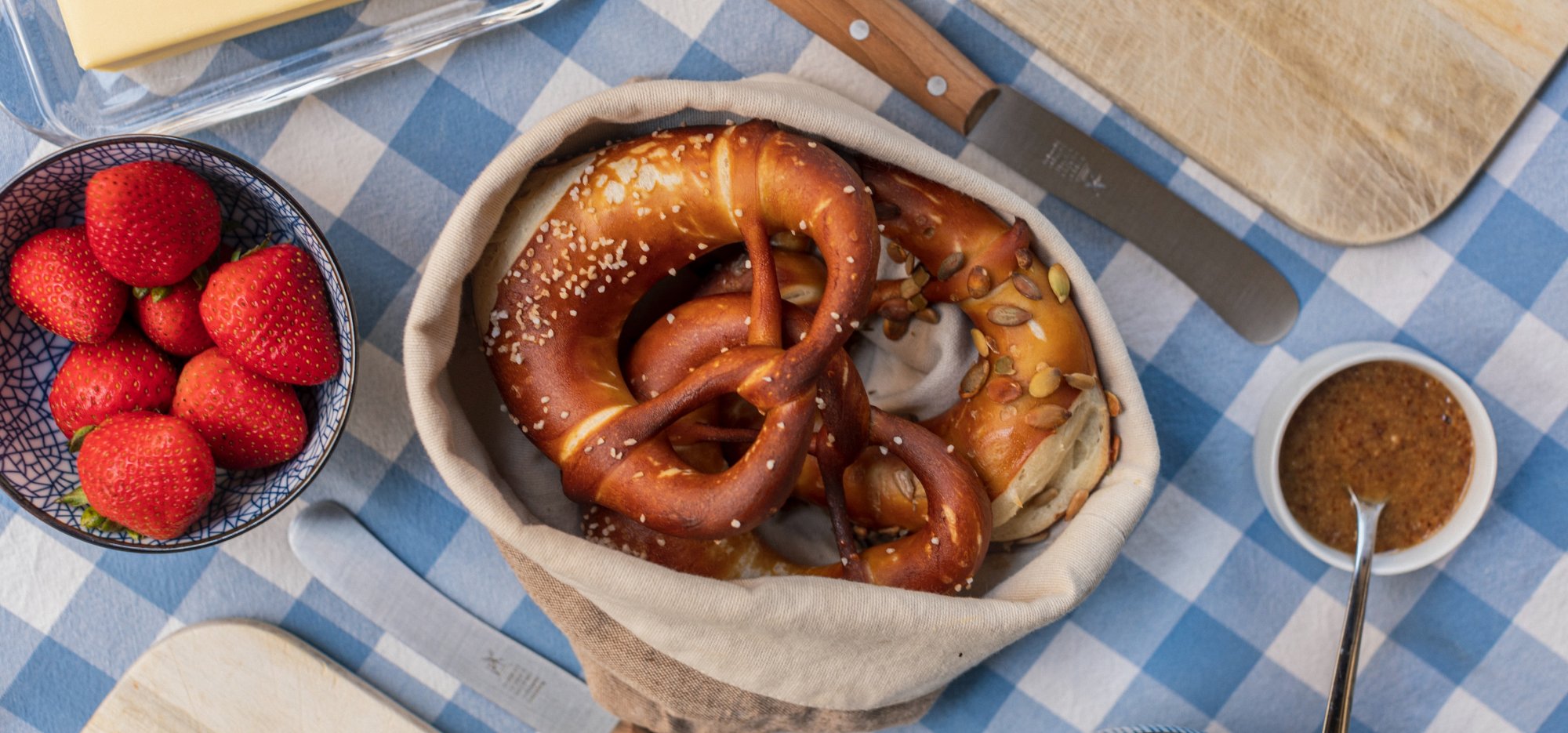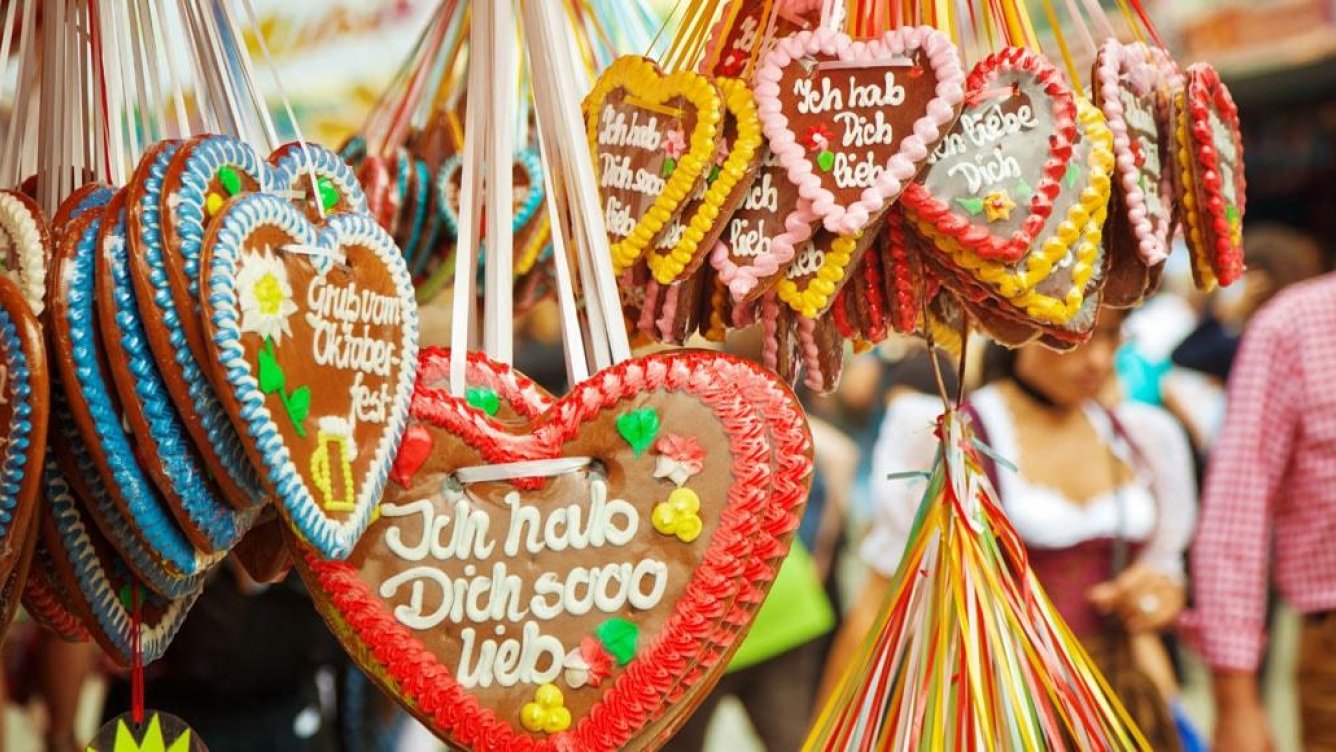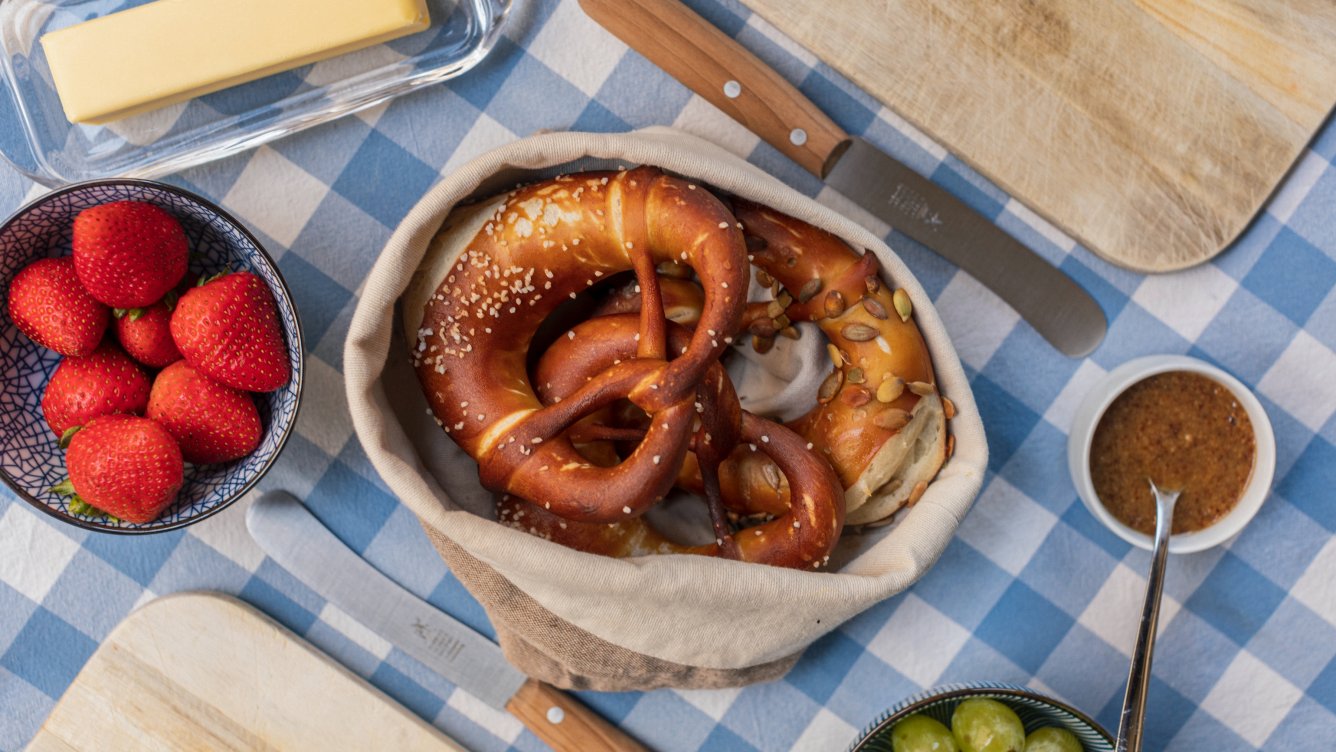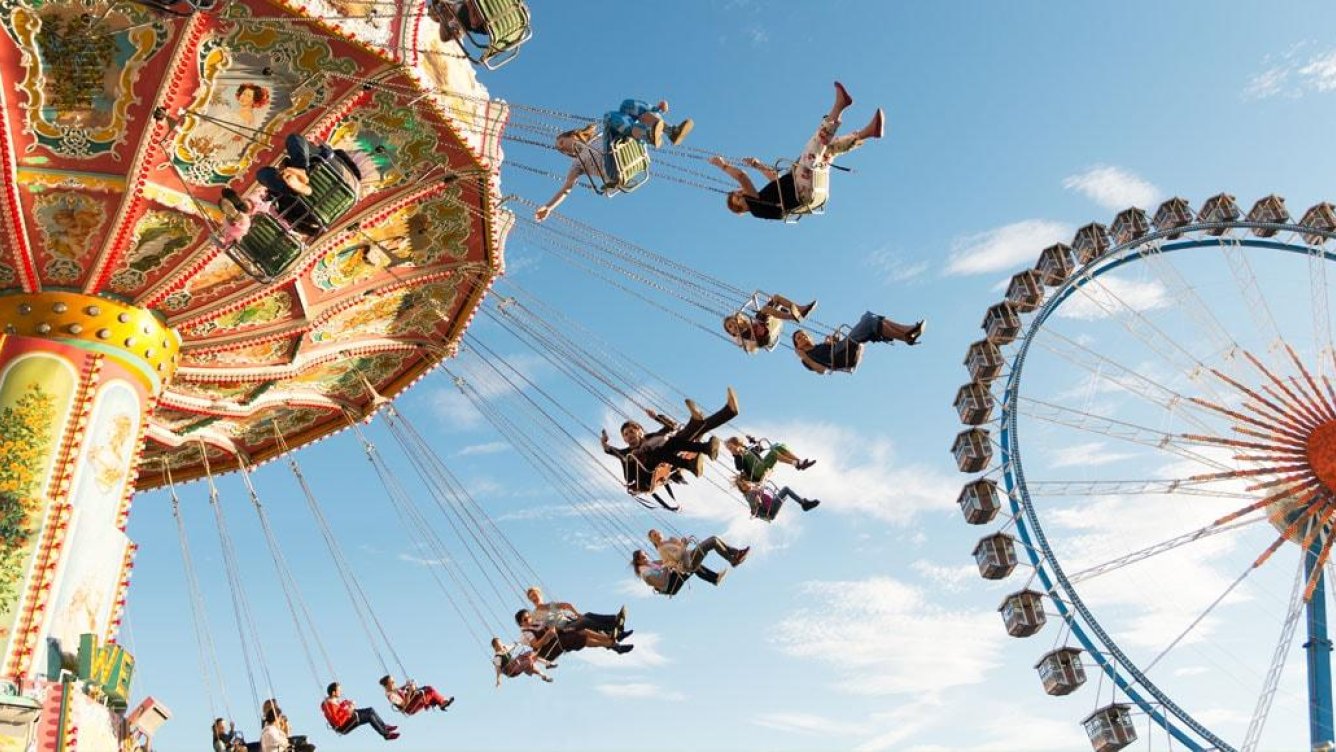No Oktoberfest is complete without dumplings, pork knuckle and sauerkraut!
Crispy pork knuckle and delicious roast pork provide the perfect accompaniment to the large quantities of beer usually consumed at this festival. Bread or potato dumplings made from floury potatoes are the perfect accompaniment. And, of course, delicious, juicy, fruity sauerkraut is essential.
Mashed potatoes are also a popular accompaniment to roast pork. This is accompanied by delicious roast pork gravy.
BACKHENDL – THE LEGENDARY PERENNIAL FAVOURITE
Tender, juicy grilled chicken with crispy skin is one of the most popular delicacies at the Oktoberfest. This speciality is offered in almost every festival tent. It is often enjoyed alongside pretzels, potato salad or coleslaw.
'RAIWADADSCHI' – THE BAVARIAN POTATO PANCAKE
Not everyone is a meat lover. For those who would prefer a vegetarian option, the authentic Bavarian Raiwadadschi, made from grated raw potatoes, is a real hit.
A serving usually consists of three potato pancakes fried in oil or clarified butter. The aroma of the potato pancakes is tempting even from a distance, and this specialty is hard to pass up.
They are typically served with apple sauce. There is also a hearty version with sauerkraut and sour cream, or with bacon for non-vegetarians.
MEATBALLS WITH POTATOES IN ALL VARIATIONS
In Berlin, flattened meatballs are called Bulette. In northern Germany, they are called frikadelle. The Bavarian version is called Fleischpflanzerl and is a must at Oktoberfest.#
Fleischpflanzerl taste good cold or warm. They are served with a variety of side dishes. Some people like to eat them with potato salad, while others prefer fried potatoes. Fleischpflanzerl are often served on the go in a Semmel, a type of bread roll.
BAKED POTATOES – AT THE WIESN WITH RACLETTE CHEESE
Hardly anyone would expect to find raclette at Oktoberfest. However, raclette cheese is becoming increasingly popular there.
It is melted in a traditional Swiss raclette oven. The melted cheese is then usually served with a baked potato.
THE FAMILIENPLATZL – ALL KINDS OF THINGS WITH FRIES AND FRIED POTATOES
This Munich beer garden is very popular with families. Here, you can find dishes that children love too.
From currywurst and fish fingers with crispy fries to family schnitzel with fried potatoes and a pickle, there is something to suit every taste and budget.



